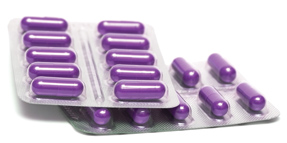White coat hypertension presents an elusive challenge
Although white coat hypertension is chalked up to general anxiety, it may be the medical setting, and specifically the physician, that acts as the trigger.
A 34-year-old man consistently had in-office blood pressure values of 140 to 150/94 mm Hg. However, he was thin, jogged, and was cautious about his salt intake. He also had a normal electrocardiogram, normal glucose and kidney function values, and home blood pressure readings of 125 to 130/80 to 84 mm Hg. He did not take antihypertensive medication.
This patient demonstrates a typical example of white coat hypertension, which may occur in one in five patients with elevated untreated office pressures, explained Raymond Townsend, MD, director of the hypertension program at the Hospital of the University of Pennsylvania in Philadelphia.

Although white coat hypertension often is chalked up to general anxiety, it may be the medical setting, and the presence of the physician in particular, that serves as the specific trigger, said William Gerin, PhD, a professor in the department of biobehavioral health at The Pennsylvania State University in University Park, Pa.
In a study by Dr. Gerin and his colleagues, reported in Blood Pressure Monitoring in 2001, a physician, nurse and automated device measured blood pressures in hypertensive patients.
“The doctor [measured] blood pressures were higher by several millimeters than the nurse blood pressures,” he said. “The nurse blood pressures were higher by several millimeters than the machine blood pressure, and the machine blood pressure was approximately at the same level as the ambulatory blood pressure.”
To avoid prescribing unnecessary antihypertensive therapy, physicians can turn to a number of strategies both inside and outside the office to pinpoint whether patients' blood pressures are truly or artificially elevated. Education is key in explaining to patients that they play a critical role in monitoring their blood pressure so they can be managed appropriately.
Office tactics
Although some research suggests women and elderly patients may be more likely to exhibit white coat hypertension, it can occur in any population.
As physicians begin talking with and observing patients, they can learn whether patients are especially anxious. “Doctors have to be sensitive to this,” Dr. Gerin said.
Physicians are more likely to suspect white coat hypertension in a patient with mildly elevated pressure who had previously normal pressures and has no evidence of damage to his or her target organs on an examination or electrocardiogram.
A careful patient history, considering family history of hypertension and coronary artery disease, also plays an important role.
“Even if they're a white coat hypertensive, you might be just a little more worried about them, and this would involve how they're followed up, if they have a strong family history for some kind of coronary disease, particularly sudden cardiac death,” Dr. Townsend said.
Comorbidities are red flags for true hypertension.
“If someone has a comorbid condition, it really increases the likelihood that they have hypertension or they are soon going to have it,” said Michael Weber, MD, FACP, professor of medicine in the division of cardiovascular medicine at State University of New York Downstate Medical Center in Brooklyn.
Conditions such as diabetes, lipid abnormalities, early signs of heart disease, and borderline kidney function should raise suspicion. “I'm assuming that if it's not hypertension yet, it's going to happen real soon,” he said.
Proper preparation of the patient is important before blood pressure is measured. Medical staff should have patients sit quietly in a chair for at least five minutes; patients should avoid cigarettes, caffeine, or exercise for at least 30 minutes beforehand; the blood pressure cuff should be the correct size; and two measurements should be taken and averaged, according to the Seventh Report of the Joint National Committee on Prevention, Detection, Evaluation, and Treatment of High Blood Pressure. If initial readings are elevated, physicians may want to repeat measurements later in the visit.
In line with the findings of his and other studies, Dr. Gerin advises using an automatic device to reduce physician-associated anxiety. The device should take the patient's blood pressure several times while the medical staff is out of the room, and then the readings should be averaged. “That will give you a more accurate blood pressure reading,” he said.
After the appointment
Ambulatory blood pressure monitoring, considered the gold standard, is recommended to identify white coat hypertension. Guidelines from the Centers for Medicare and Medicaid Services require that patients have three in-office values greater than 140 mm Hg systolic and 90 mm Hg diastolic to be reimbursed for ambulatory blood pressure monitoring when white coat hypertension is suspected.
As a compromise, some physicians may prescribe ambulatory monitoring for a few hours as a patient shops or does errands nearby.
A more common way to detect white coat hypertension may be to ask patients to regularly measure their blood pressure using home devices, Dr. Townsend said. If a patient's home values are less than 130 mm Hg systolic and less than 80 mm Hg diastolic, he believes hypertension is not likely.
However, he explained, the late Thomas Pickering, MD, used values of less than 125 mm Hg and less than 76 mm Hg diastolic to be reasonably confident a patient did not have hypertension. For patients with values between 125/76 and 135/85 mm Hg, Dr. Pickering recommended 24-hour ambulatory blood pressure monitoring, considering a 24-hour value less than 130 mm Hg systolic and less than 80 mm Hg diastolic nonhypertensive.
To obtain accurate results with home devices, it's important to provide guidance to patients, experts said.
“We usually recommend that patients purchase monitors that actually have a cuff, not the finger monitors, for instance,” said Mary Ann Forciea, MD, FACP, clinical professor of medicine at the University of Pennsylvania Health System in Philadelphia. “We have them bring it in after they buy it so that our staff can show them how to use it and check the accuracy of the machine.”
Dr. Townsend reminds patients to carefully follow the manufacturer's directions in using the device. Furthermore, he urges them to empty their bladders before taking their blood pressure. “The fullness in the bladder actually pumps the blood pressure up quite a bit,” Dr. Townsend said.
Patients take their blood pressure twice in the morning and twice in the evening each day. When they return with a week's readings, Dr. Townsend discounts pressures from the first day and averages the rest.
Potential sign for the future
Although white coat hypertension may be confined to the medical office, physicians must emphasize to patients that they cannot afford to dismiss it.
In a 1994 study in Circulation, Dr. Weber and his colleagues reported that patients with white coat hypertension demonstrated by ambulatory blood pressuring monitoring had early signs of changes in their hearts, kidneys and some hormone systems.
“So even though they didn't really have true hypertension, they only had white coat hypertension, they weren't completely normal either,” Dr. Weber said.
A subsequent 2005 study by Verdecchia and colleagues, published in Hypertension, suggested that the risk of stroke tended to rise long term in patients with white coat hypertension. In a 2005 editorial in Blood Pressure Monitoring, Verdecchia and Angeli also reported a higher risk of sustained hypertension in patients with white coat hypertension.
Physicians should explain the potential risks to patients and stress the importance of regular follow-up appointments to monitor their electrocardiogram, kidney function and blood sugar and monitor their blood pressure at home, particularly if they have a family history of hypertension.
Frequency of follow-up is a judgment call, Dr. Townsend said, and family history is an important risk modifier. He explained that yearly appointments are reasonable when a patient has white coat hypertension because a portion of these patients will go on to have sustained hypertension.
“By keeping them engaged in both checking blood pressure at home and (hopefully) trying to maintain a healthy lifestyle, the onset of hypertension could be pushed back a few more years,” he said.
Physicians concerned that white coat hypertension may be causing organ damage may order an echocardiogram.
“We do the echocardiogram looking at the wall thickness and how well the heart relaxes,” Dr. Townsend said. If relaxation is impaired, and in particular if the posterior or septal wall is more than 11 mm thick, he is more inclined to begin antihypertensive treatment.
The stakes are particularly high when young patients have white coat hypertension, Dr. Weber said. He urges these patients to eat a healthy diet, reduce their sodium intake, and increase their exercise, which may stave off hypertension for decades.
Dr. Weber recommends that most patients monitor their blood pressures at home. “There's nothing wrong with people checking their pressures on a regular basis, even people who do not have hypertension or don't think they have hypertension, because sometimes you can be surprised,” Dr. Weber said.
Dr. Townsend suggested that physicians recommend home monitoring to their patients. “[Home monitoring] engages [patients] in clinical care and teaches them a bit about the variability in blood pressure so that they understand that when we have more data [like many blood pressure readings] it makes for a clearer and more palatable decision to initiate, or change, therapy,” he said.
Dr. Weber explained that because most people with white coat hypertension will become truly hypertensive over time, the office blood pressure, if measured reliably and reproducibly, generally can be used for treatment decisions, particularly if other risk factors are present.
It is particularly important to identify white coat hypertension in elderly patients to minimize the number of medications and avoid overtreating them, Dr. Forciea said.
“In my patients who are at risk of falling if their blood pressure is too low, or interactions with other medications are a substantial problem,” she said, “we want to be extremely careful about making sure we're not missing a diagnosis of white coat hypertension.”





